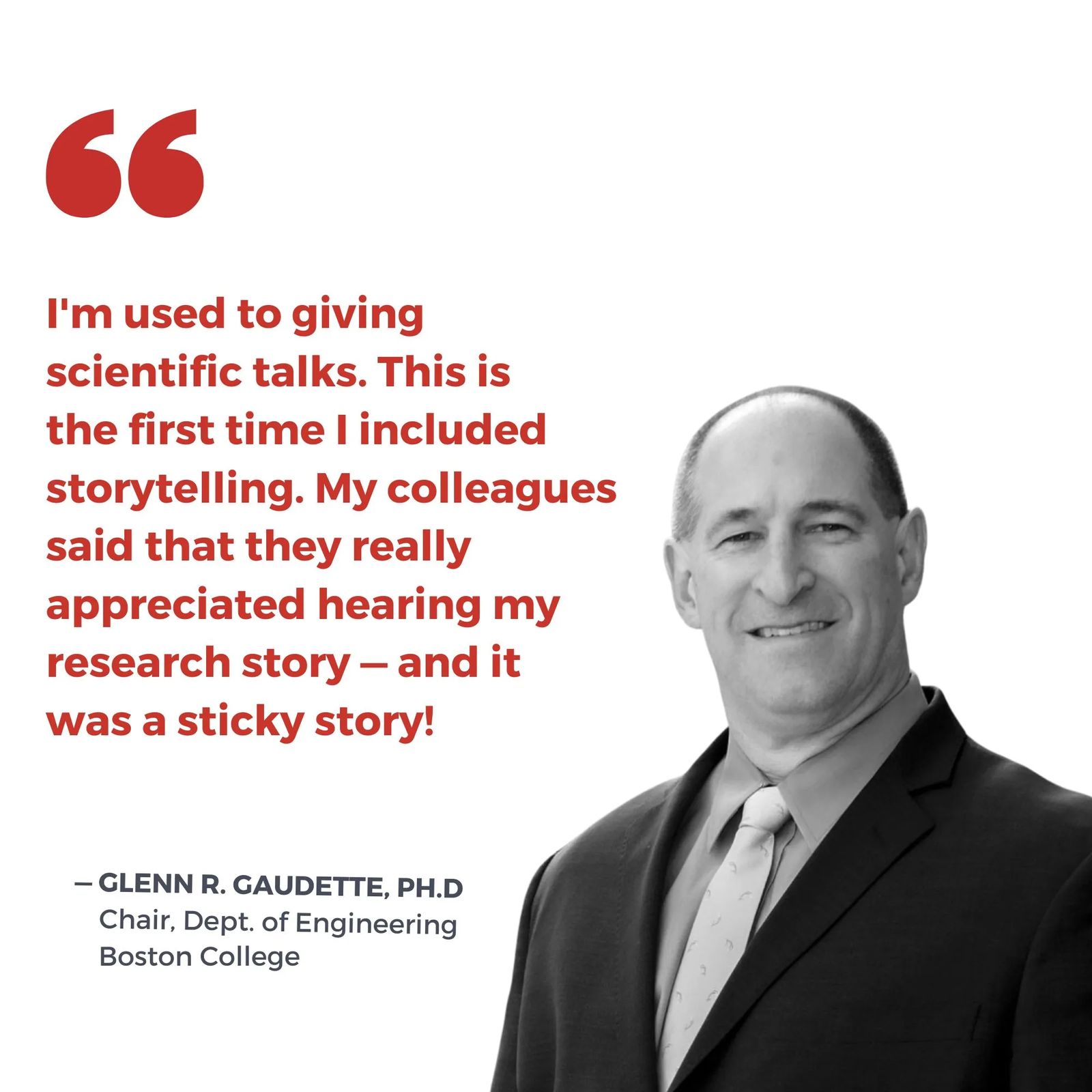The Retellability Factor in Storytelling
finding Generational clarity in a story that spreads
By Devin D. Marks | Published Feb 14, 2025
What will the story of the story be?
Whenever you’re shaping a story, it pays to anticipate the other forms it will take in the retelling.
I call this distilling for Generational Clarity.
KNOW THIS: The audience will inevitably simplify your story to a sentence or two.
So whether you’re delivering a TED Talk, funding pitch, or boardroom preso... You should know in advance what form that soundbite will take — how your story will be retold when you’re not in the room.
TEDster and master communicator, Tim Pollard, calls this shooting for “2nd Story Success.” He advocates for “retellability” in storytelling. (His excellent talk about fixing communications is here.)
Let’s turn to the TED stage to see this retellablity concept in action.
Here is Sir Ken Robinson's famous "Dancing Girl story in its original 350-word format:
"Gillian and I had lunch one day. I said, 'How did you get to be a dancer?'
When she was at school, she was really hopeless. And the school, in the '30s, wrote to her parents and said, 'We think Gillian has a learning disorder.' She couldn't concentrate; she was fidgeting.
She went to see this specialist in this oak-paneled room, and she was there with her mother, and she was led and sat on this chair at the end, and she sat on her hands for 20 minutes, while this man talked to her mother about all the problems Gillian was having at school, because she was disturbing people, her homework was always late, and so on.
In the end, the doctor went and sat next to Gillian and said, 'I've listened to all these things your mother's told me. I need to speak to her privately. Wait here. We'll be back. We won't be very long,' and they went and left her.
But as they went out of the room, he turned on the radio that was sitting on his desk. And when they got out of the room, he said to her mother, 'Just stand and watch her.'
And the minute they left the room, she was on her feet, moving to the music. And they watched for a few minutes, and he turned to her mother and said,
'Mrs. Lynne, Gillian isn't sick. She's a dancer. Take her to a dance school.'
Gillian said, 'I can't tell you how wonderful it was. We walked in this room, and it was full of people like me — people who couldn't sit still, people who had to move to think.'
She was eventually auditioned for the Royal Ballet School. She became a soloist; she had a wonderful career at the Royal Ballet. She eventually graduated from the Royal Ballet School, founded the Gillian Lynne Dance Company, met Andrew Lloyd Webber. She's been responsible for some of the most successful musical theater productions in history, she's given pleasure to millions, and she's a multimillionaire!"
This story, as delivered by Sir Ken on stage, reflects a perfect 3-act story:
1. A setup (child visiting doctor).
2. A problem (fidgeting in school)
3. A resolution (dance school + career).
It also happens to be part of the single most-viewed TED Talk of all time. So clearly something in that story works!
But that 350-word version won’t be what’s repeated by any audience member. Regardless of how enthusiastic they may be in spreading it, the tale will be distilled.
Perhaps the 2nd-gen version will be a mere 80 words and flow this way:
"A little girl couldn’t be still in school. Gillian moved and swayed whether seated or standing.
Her mother took her to a specialist. He examined her and then, as he left the room, he switched on the radio. In an instant, she was up and dancing.
'Gillian’s not a problem student. She’s a dancer; she needs to move to think — take her to a performing arts school.'
The mother did and in time the child became a Broadway sensation."
Cleaner, right?
Easier to spread?
What’s more, an even shorter version of 25 words may do the trick:
"A fidgety schoolgirl was diagnosed a “dancer” — someone who had to move to think. Gillian transferred to a dance school and became a Broadway star."
Again, consider the story’s minimalist — reductionistic — form and pursue it relentlessly. Draft that pithy 2nd generation story. Condense it into a few short sentences with simple words.
Know that it may even go another generation: the story of the story of the story!
Use that condensed, next-gen version to fill in the blank:
“He told me a great story about [ ________ ].”
Generational Clarity is key to retellablity in storytelling!
DEVIN D. MARKS one of the nation's leading "short talk" speaker trainers. His firm, CONNECT to COMPEL, has served 100s of speakers — including Harvard’s Dr. Robert Waldinger for his all-time Top 10 TEDx Talk. The result: 100s of millions of views for clients. He helps niche experts, authors, and leaders spread world-changing ideas.
You can reach Devin at 617.804.6020, or DM him here. His newsletters are here.
LET THE WORLD LIVE YOUR MESSAGE™

